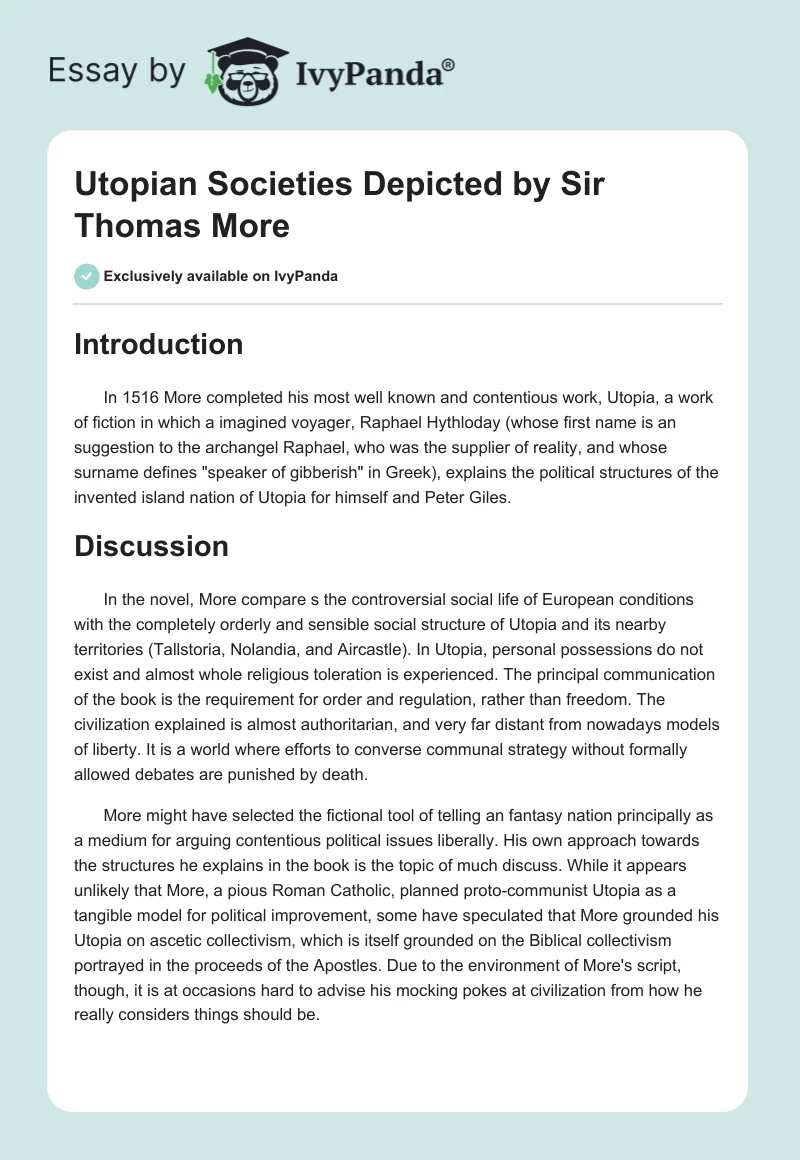Introduction
In 1516 More completed his most well known and contentious work, Utopia, a work of fiction in which a imagined voyager, Raphael Hythloday (whose first name is an suggestion to the archangel Raphael, who was the supplier of reality, and whose surname defines “speaker of gibberish” in Greek), explains the political structures of the invented island nation of Utopia for himself and Peter Giles.
Discussion
In the novel, More compare s the controversial social life of European conditions with the completely orderly and sensible social structure of Utopia and its nearby territories (Tallstoria, Nolandia, and Aircastle). In Utopia, personal possessions do not exist and almost whole religious toleration is experienced. The principal communication of the book is the requirement for order and regulation, rather than freedom. The civilization explained is almost authoritarian, and very far distant from nowadays models of liberty. It is a world where efforts to converse communal strategy without formally allowed debates are punished by death.
More might have selected the fictional tool of telling an fantasy nation principally as a medium for arguing contentious political issues liberally. His own approach towards the structures he explains in the book is the topic of much discuss. While it appears unlikely that More, a pious Roman Catholic, planned proto-communist Utopia as a tangible model for political improvement, some have speculated that More grounded his Utopia on ascetic collectivism, which is itself grounded on the Biblical collectivism portrayed in the proceeds of the Apostles. Due to the environment of More’s script, though, it is at occasions hard to advise his mocking pokes at civilization from how he really considers things should be.
Conclusion
Utopia is often regarded as the predecessor of the Utopian type of prose, in which dissimilar notions of the “perfect community” or wonderful cities are portrayed in dissimilar quantities of detail by the author. Though a generally Renaissance movement, grounded on the rebirth of traditional notions of perfect societies as spread by Plato and Aristotle, joined with Roman metaphorical finesse (see Cicero, Quintilian, epideictic rhetoric.


